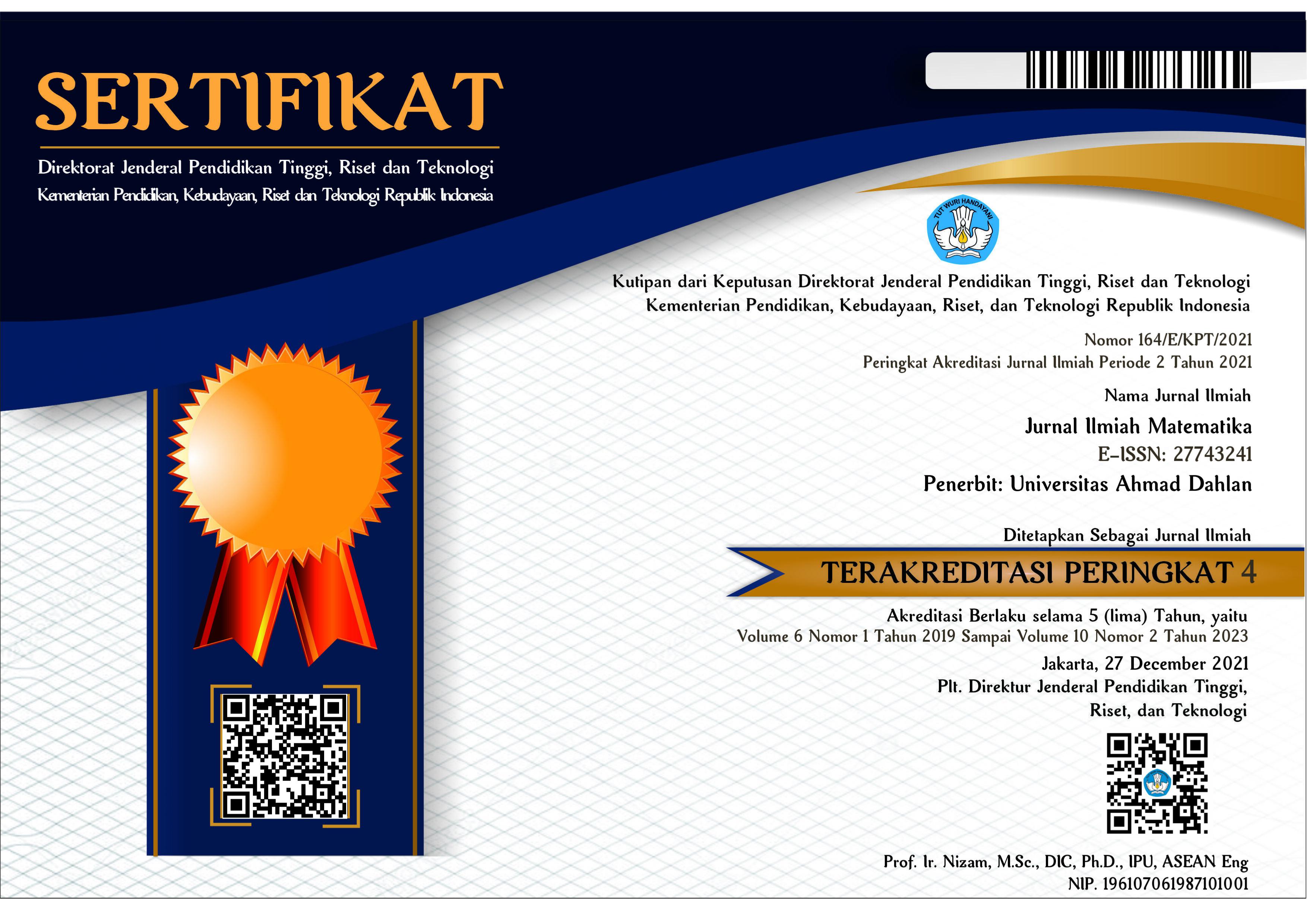Peramalan Data Runtun Waktu Menggunakan Metode Wavelet-VAR
DOI:
https://doi.org/10.26555/konvergensi.v7i2.19603Keywords:
Trnsformasi Wavelet, Vektor Autoregressive, DenoisingAbstract
Peramalan adalah kegiatan meramalkan kejadian yang akan datang berdasarkan data dari kejadian sebelumnya. Data yang digunakan dalam penelitian ini adalah data deret waktu. Penelitian ini mengembangkan metode peramalan yang menggabungkan penggunaan wavelet dalam vector autoregressive (VAR). Wavelet digunakan sebagai alat denoising sebelum dimasukkan ke dalam persamaan regresi menggunakan vektor autoregresif. Metode ini disebut metode Wavelet-VAR. Dalam implementasinya, data deret waktu ditransformasikan menggunakan transformasi wavelet diskrit (DWT) untuk mendapatkan koefisien perkiraan dan koefisien detail. Selanjutnya noise yang terdapat pada koefisien detail dihilangkan dengan menggunakan metode thresholding tertentu. Melalui inversi transformasi wavelet diskrit (IDWT), data baru bebas noise diperoleh. Selanjutnya data bersih ini digunakan dalam peramalan dengan metode vector autoregressive. Dalam implementasinya, diterapkan data curah hujan di Kabupaten Sleman mulai Desember 2019 hingga April 2020 yang diperoleh dari situs resmi Badan Meteorologi, Klimatologi, dan Geofisika (BMKG). Untuk mengukur kualitas kualitas peramalan digunakan mean square error (MSE). Metode Wavelet-VAR menghasilkan MSE 0,354 sedangkan metode VAR menghasilkan MSE 0,838. Dalam hal ini, metode Wavelet-VAR lebih baik daripada metode VAR.References
S. Makridakis, S. C. Wheelwright, and V. E. McGee, “Metode dan aplikasi peramalan,†Jakarta: Erlangga, 1999.
I. Daubechies and B. J. Bates, “Ten lectures on wavelets.†Acoustical Society of America, 1993.
T. Ogden, Essential wavelets for statistical applications and data analysis. Springer Science & Business Media, 2012.
D. B. Percival and A. T. Walden, Wavelet methods for time series analysis, vol. 4. Cambridge university press, 2000.
L. Debnath and F. A. Shah, Wavelet transforms and their applications. Springer, 2002.
D. F. Walnut, An introduction to wavelet analysis. Springer Science & Business Media, 2013.
D. L. Donoho and J. M. Johnstone, “Ideal spatial adaptation by wavelet shrinkage,†Biometrika, vol. 81, no. 3, pp. 425–455, 1994.
D. Sundararajan, Discrete wavelet transform: a signal processing approach. John Wiley & Sons, 2016.
D. N. Gujarati, D. C. Porter, and S. Gunasekar, Basic econometrics. Tata McGraw-Hill Education, 2012.
J. Dinardo, J. Johnston, and J. Johnston, “Econometric methods,†Forth Ed. McGraw-Hill Companies, Inc, pp. 204–326, 1997.
A. Chuang, “Time series analysis: univariate and multivariate methods.†Taylor & Francis, 1991.
Downloads
Published
Issue
Section
License
Authors who publish with this journal agree to the following terms:
1. Authors retain copyright and grant the journal right of first publication with the work simultaneously licensed under a Creative Commons Attribution License that allows others to share the work with an acknowledgment of the work's authorship and initial publication in this journal.
2. Authors are able to enter into separate, additional contractual arrangements for the non-exclusive distribution of the journal's published version of the work (e.g., post it to an institutional repository or publish it in a book), with an acknowledgment of its initial publication in this journal.
3. Authors are permitted and encouraged to post their work online (e.g., in institutional repositories or on their website) prior to and during the submission process, as it can lead to productive exchanges, as well as earlier and greater citation of published work.

This work is licensed under a Creative Commons Attribution-ShareAlike 2.0 Generic License.









